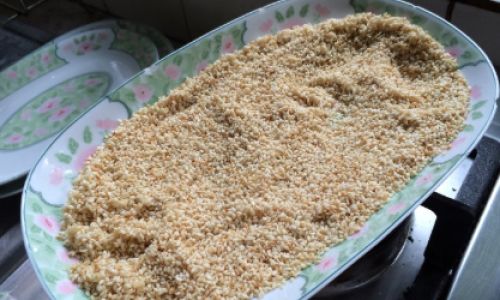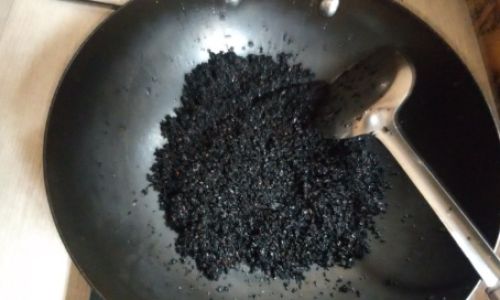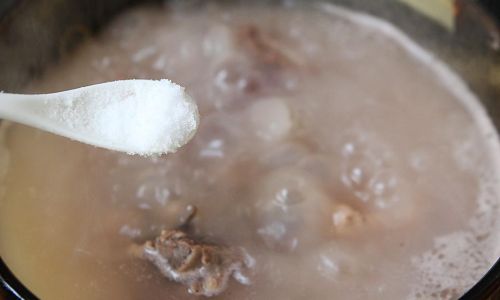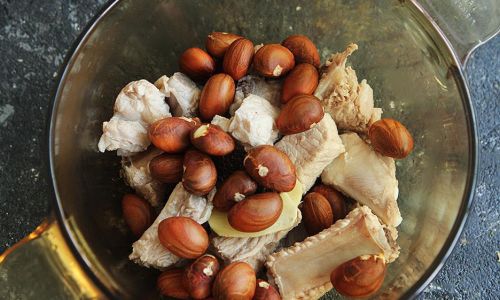Table of content
Roasting sesame seeds is a culinary technique that transforms these tiny, nutrient-packed seeds into a fragrant, golden ingredient essential to countless dishes across the globe. From Asian stir-fries and Middle Eastern halva to garnishes for bread and salads, properly roasted sesame seeds add a nutty depth and crunch that elevate any recipe. Yet, for many home cooks, the question lingers: How long should you roast sesame seeds to achieve that ideal balance of flavor and texture without burning them? This article delves into the science, techniques, and nuances of roasting sesame seeds, exploring variables like heat, quantity, and desired outcome to help you master this age-old skill.
The Basics of Roasting Sesame Seeds
Sesame seeds (Sesamum indicum) contain natural oils and sugars that caramelize when exposed to heat, releasing their signature aroma and crunch. The roasting process serves two primary purposes: enhancing flavor and extending shelf life by reducing moisture content. However, overcooking can turn these delicate seeds bitter, while undercooking leaves them raw and lacking in complexity. Striking the right balance hinges on understanding the interplay between time, temperature, and sensory cues.
Tools and Preparation
Before diving into timings, gather the right tools:

- A heavy-bottomed pan or skillet: Ensures even heat distribution.
- A wooden spoon or spatula: For stirring without scratching the pan.
- A baking sheet (for oven roasting): An alternative method for larger batches.
- A fine-mesh sieve: To remove any debris or small stones from raw seeds.
Preparation Steps:
- Rinse the seeds under cool water to remove dust (optional, but recommended for purity).
- Spread them on a clean towel to air-dry completely. Moisture can cause uneven roasting.
Stovetop Roasting: The Traditional Method
Stovetop roasting is the most common technique, offering precise control over heat. Here’s a breakdown of the process:
Preheating the Pan
- Place the pan over medium-low to medium heat. Avoid high heat, which risks burning the seeds before they toast evenly.
- Let the pan warm for 1–2 minutes. A drop of water should sizzle and evaporate immediately when flicked onto the surface.
Adding the Sesame Seeds
- Pour 1 cup (150g) of sesame seeds into the pan. Adjust quantities proportionally—larger batches require longer cooking times due to reduced surface area exposure.
- Spread the seeds in a single layer to ensure even roasting.
Stirring and Monitoring
- Stir continuously using a wooden spoon. This prevents hotspots and ensures uniform browning.
- Observe the seeds closely. Color changes are your primary indicator:
- Raw seeds: Pale beige or off-white.
- Lightly roasted: Golden hues emerge after 3–5 minutes.
- Darkly roasted: Deep amber tones appear after 8–10 minutes (for a bolder flavor).
Aromatic Cues
- Listen for a subtle crackling sound as moisture evaporates.
- Inhale deeply—the scent will evolve from raw, grassy notes to a warm, nutty aroma.
Timing Guidelines
- Light Roast (for garnishes/salads): 3–4 minutes. Seeds retain a mild flavor and soft texture.
- Medium Roast (for tahini/sauces): 5–7 minutes. Balanced nuttiness with a slight crunch.
- Dark Roast (for intense flavor/oil extraction): 8–10 minutes. Deep color and assertive taste.
Pro Tip: Remove the pan from heat 30 seconds before you think they’re done—residual heat continues cooking for a short period.
Oven Roasting: A Hands-Off Approach
Oven roasting suits larger batches but requires less active stirring. However, it’s less forgiving due to slower heat adjustment:
- Preheat the oven to 350°F (175°C).
- Spread 2 cups (300g) of seeds on a baking sheet in a thin layer.
- Roast for 8–12 minutes, stirring every 3 minutes with a spatula.
- Monitor closely after the 8-minute mark to prevent burning.
Oven-roasted seeds tend to brown more evenly but may lack the depth of stovetop-roasted varieties due to lower direct heat.
Factors Influencing Roasting Time
Several variables affect how long you should roast sesame seeds:

Seed Variety
- White sesame seeds: Milder flavor, quicker to roast (3–5 minutes for light toast).
- Black sesame seeds: Thicker hulls require slightly longer cooking (4–6 minutes for light toast).
- Hulled vs. Unhulled: Hulled seeds (without outer shells) roast faster due to reduced moisture.
Quantity
- Smaller batches (1/2 cup) roast in 3–5 minutes.
- Larger batches (2+ cups) may take 7–10 minutes due to steam buildup, which slows evaporation.
Heat Source
- Gas stoves: Offer instant heat adjustment; ideal for precision.
- Electric stoves: Retain heat longer—reduce temperature slightly to avoid overcooking.
- Induction: Fast and efficient; monitor closely.
Desired Use
- Garnishes/toppings: Light roast preserves texture.
- Tahini/pastes: Medium roast enhances nutty undertones.
- Sesame oil: Dark roast maximizes flavor extraction.
Common Mistakes and How to Avoid Them
Overcrowding the Pan
- Issue: Seeds steam instead of roast, leading to uneven browning.
- Fix: Roast in batches if needed. Use a pan large enough to spread seeds thinly.
High Heat
- Issue: Seeds burn on the outside while remaining raw inside.
- Fix: Start with medium-low heat and adjust gradually.
Under-Stirring
- Issue: Seeds at the bottom scorch while those on top stay pale.
- Fix: Stir continuously or use a pan with sloped sides to facilitate movement.
Premature Removal
- Issue: Seeds taste raw and lack depth.
- Fix: Trust the color and aroma cues. A few extra seconds can make a difference.
Testing for Doneness
Beyond timing, rely on sensory tests:
- Color: Aim for a uniform golden hue. Avoid patches of black or brown.
- Aroma: The scent should be warm and toasty, not acrid or burnt.
- Texture: Let a few seeds cool, then bite into one. It should be crisp, not chewy.
- Sound: Listen for a faint crackle as you stir—a sign of moisture evaporation.
Cooling and Storage
Proper cooling preserves crispness:
- Transfer roasted seeds to a plate or baking sheet immediately after roasting.
- Spread them out to cool completely (10–15 minutes).
- Store in an airtight container in a cool, dark place. Roasted sesame seeds last 3–6 months when stored correctly.
Advanced Techniques
Flavor Infusions
- Add spices like cumin or coriander seeds during the last minute of roasting for aromatic blends.
- Toss with a pinch of sea salt or sugar post-roasting for added dimension.
Grinding and Blending
- Roasted seeds grind more easily into powders or pastes. Use a spice grinder or mortar and pestle.
Oil Roasting
- For a richer flavor, toss seeds with a teaspoon of neutral oil (e.g., grapeseed) before roasting. Monitor closely to prevent sizzling and burning.
Cultural Significance of Roasted Sesame Seeds
Sesame seeds have been roasted for millennia across cultures:
- Japan: Gomashio (sesame salt) is a staple condiment.
- India: Til seeds are roasted for festivals like Makar Sankranti.
- Middle East: Roasted seeds form the base of halva and tahini.
The roasting time often varies by tradition—some cultures prefer a darker toast for robust flavors, while others favor lighter hues to preserve subtlety.
Troubleshooting Guide
| Problem | Cause | Solution |
|---|---|---|
| Burnt seeds | Too high heat | Reduce temperature; stir more often. |
| Uneven browning | Overcrowded pan | Roast in smaller batches. |
| Raw taste | Under-roasting | Extend time by 1–2 minutes. |
| Bitter aftertaste | Over-roasting | Remove from heat sooner next time. |
Conclusion
Mastering the art of roasting sesame seeds is a blend of science and intuition. While general guidelines suggest 3–10 minutes for stovetop roasting, the perfect time depends on your tools, seeds, and intended use. By observing color, listening to sounds, and trusting your nose, you’ll soon roast sesame seeds with confidence—whether you’re topping a hummus bowl, crafting homemade tahini, or adding a garnish to sushi. Remember: practice makes perfect, and a single burnt batch is a small price to pay for the culinary rewards of this ancient skill.





0 comments